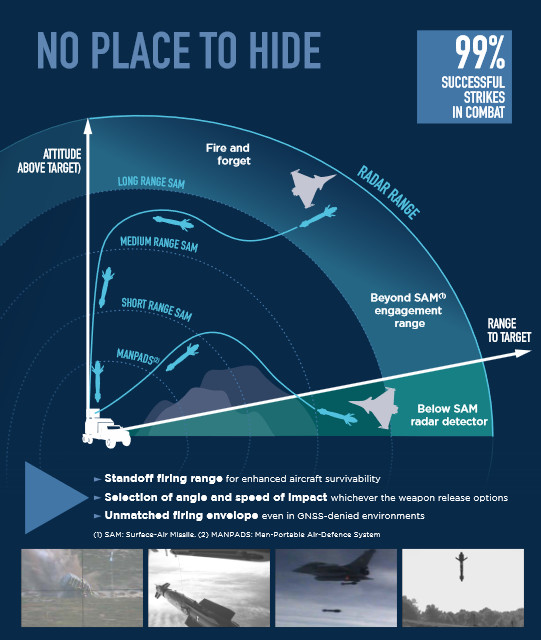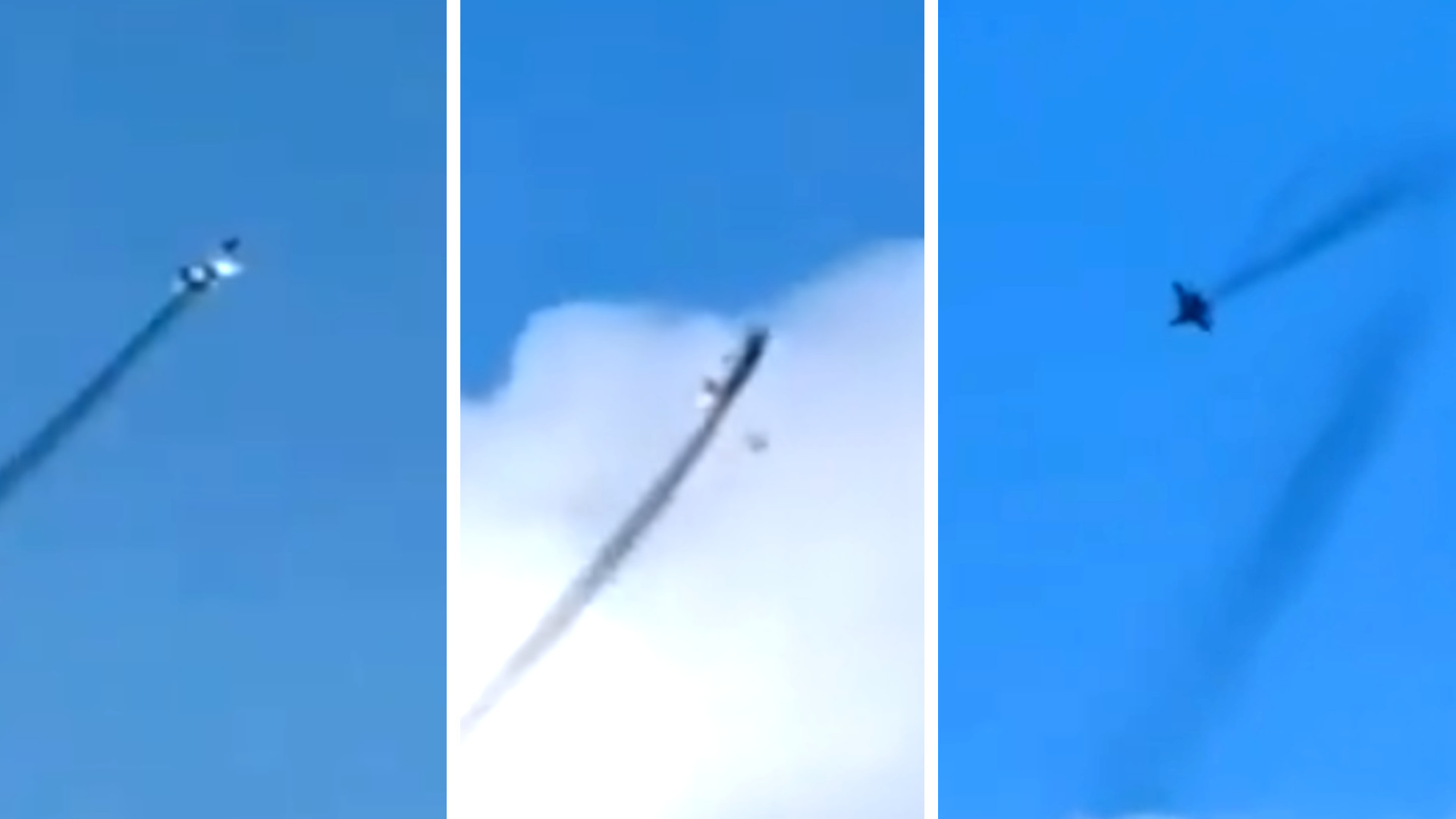A video has emerged showing a low-flying Ukrainian MiG-29 Fulcrum fighter pop-up and lob munitions downrange using a toss bombing technique. The weapons in question are said to be a French-made rocket-assisted Hammer precision-guided bomb, which is designed to be used in exactly this way, among other modes of delivery. They could also be another kind of weapon, including a Joint Direct Attack Munition-Extended Range (ER) glide bomb, as this method of employment can be used with any bomb to minimize the launch aircraft’s exposure to enemy defenses
The footage of the toss-bombing MiG-29 emerged on social media earlier today. An additional video is said to show the weapons that were lobbed hitting a border crossing point between the Kharkiv and Belgorod regions of Ukraine and Russia, respectively. Kharkiv has been the focus of a major new Russian offensive since May.
The War Zone cannot immediately verify that the two videos are linked. The MiG-29 clip is also low resolution, making definitive confirmation that a Hammer bomb is indeed what is seen being launched difficult. It cuts to footage showing what appear to be two smoke trails, which could also point to Hammer. Ukrainian Fulcrums, along with Su-25 Frogfoot ground attack jets, are known to carry the bombs, which French authorities first announced they would be supplying back in January. Ukraine’s MiG-29s, as well as Su-27 Flankers, are also now able to launch JDAM-ERs thanks to special pylons and other modifications.
Hammer is a precision-guided bomb that is really more of a conversion kit, being created by attaching a nose-mounted guidance section and tail-mounted range-extension kit (REK) to a standard iron bomb. This is similar in some broad strokes to the JDAM-ERs that Ukraine has also received. Hammers come in a variety of sizes, but Ukraine is understood to have gotten 500-pound (250-kilogram) class types, also sometimes referred to AASM-250s.

It’s worth noting that the basic idea of toss bombing, also known as loft bombing, is many decades old. By lobbing bombs at targets indirectly, launching aircraft can stay further away or otherwise avoid enemy defenses. During the early years of the Cold War, the U.S. military also notably trained to use toss bombing as a way for smaller and/or slower U.S. military aircraft to get nuclear bombs on target while giving them more time to escape the blast radius.

With unguided munitions, a toss/lofted technique significantly reduces accuracy. Hammer and JDAM-ER both come standard with GPS-assisted inertial navigation system (INS) guidance packages that would allow them to zero in on set coordinates even when employed indirectly.
Much more importantly, the French precision-guided munitions have the REK, which is a solid-fuel rocket booster designed to extend the weapon’s range. This is already a very useful additional capability when employing these weapons in level flight at higher altitudes, giving 500-pound/250-kilogram class versions the ability to hit targets up to 43 miles (70 kilometers) away. That is similar to the stated maximum range of the unpowered JDAM-ER with its pop-out wing kit.
However, any air-dropped precision-guided bomb’s maximum range depends on altitude, with it generally decreasing the lower the launch platform is at the time of release. Hammer’s REK is specifically designed to give low-flying launch aircraft a unique option for getting the bomb to targets at extended ranges via a lofted trajectory, including up and over “rough terrain” with the help of rocket assistance. The manufacturer Safran says that the weapon can still hit targets at least nine miles (15 kilometers) away when released at low altitudes and it can do so with the weapon impacting at a higher-energy state than its glide bomb counterparts.

That being said, Ukraine’s unpowered JDAM-ERs could still also be employed using a toss/loft bombing technique. This was something The War Zone explicitly noted when it first emerged that Ukraine was set to get those glide bombs.
“I don’t want to get into the exact tactics… but obviously, the lower you are, and the further away from the surface to air missiles that can detect you because of the curvature of the earth” affect how far the bomb can travel, U.S. Air Force Gen. James Hecker, head of U.S. Air Forces in Europe (USAFE), as well as NATO’s Allied Air Command and U.S. Air Forces Africa (AFAFRICA), said while speaking about Ukraine’s use of JDAM-ER back in March 2023. “There are tactics where you can go in low and do some things… and get back.”
That Ukrainian jets would be lobbing Hammers or JDAM-ERs makes sense given the multi-layered air defense threats that both sides of the conflict continue to face. Even after more than two years, neither side has been able to establish any form of air superiority.
Russian and Ukrainian helicopters have already been lobbing barrages of unguided rockets indirectly using a lofted technique for some time now due to these threats.
Since January 2023, Russian fixed-wing aircraft have also been employing their own increasingly larger stand-off glide bombs with pop-out wings to help reduce how exposed they have to be to Ukrainian air defenses, especially longer-range Western-supplied systems like the U.S.-made Patriot.
Ukrainian MiG-29s use of toss-bombing munitions, whether they be Hammers specifically designed to be used this way or something else, is a critical tactic that allows for precision strikes beyond the front lines while giving the pilot and aircraft a good chance of surviving to do it again the next day.
Contact the author: joe@twz.com
